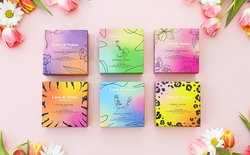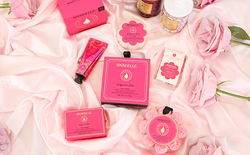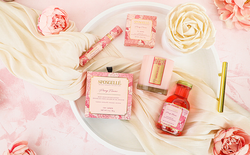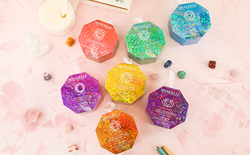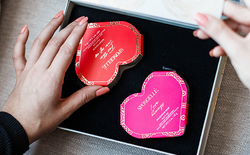Let’s be honest, hair removal can be quite a chore. No matter how you decide to remove hair there are always going to be pain points. If it’s shaving that you choose, it can be razor bumps or burn, and the hassle of keeping up with it every few days.
Although results can vary based on location, application expertise, and personal hair growth, waxing can last from three to six weeks. In our books, that’s a pretty impressive amount of time to be hair-free.
It can feel intimidating to even think of attempting to recreate what the ladies in the salon do every day. We are here to tell you, with the right prep, products, and practice you will be waxing like a pro in no time.
Wax Selection and Hair Prep
There is something about minimalism that we love. It’s wonderful to have an entire spa experience at home, with a wax warmer, sprays, potions, and lotions.
We know you will use your best judgment when it comes to what you want to invest in for your experience. The main items you need to begin your home waxing routine are waxing strips made out of cotton, depilatory wax, and a popsicle stick.
Which Wax To Use
Not all wax is created equal. There are many waxes on the market and choosing the right one can help prevent any mishaps. If you go for a soft wax, it is best to avoid multiple passes on your skin. If there are spots you miss, go for your tweezers to safely remove them.
If you choose a hard wax, it can be a great option for tough-to-remove hair. A benefit of hard wax is that it allows you to go across the skin more than one time without the likelihood of skin lifting.
If you are using any wax that requires heating, be sure to test the temperature before applying it to your hair. Remember: we always want to preserve the integrity of the skin while safely removing hair.
Hair Length
When waxing your hair, you want to make sure you are completely removing the hair from the root. For first-time waxers, we have a few benchmarks. Starting from the most recent hair removal, you should grow your hair out for two weeks from that point. Ideally, your hair length should be about the size of a grain of rice, or ¼ inch long.
Measuring the length of your hair is a good way to see if it is long enough. You can easily do this by gently pulling the hairs up. It may not be long enough if you aren’t able to grasp the hairs without pinching the skin. If your hair tends to grow slower, you may want to wait a little longer.
Skin Preparation
When you wax, you are pulling the hair out by the root, or the very spot in your skin that your hair begins to grow. This open hair follicle can be a prime spot for germs or dirt. To avoid issues and ensure smooth skin, skin prep is a crucial part of the process. Here are best practices.
벗 겨 지 다
About two days prior to the day you want to wax, you want to gently exfoliate your skin. Gentle is the best approach prior to waxing. Harsh scrubs and chemicals could irritate your skin. For best waxing results, loosening any ingrown hairs and removing any dead skin around the hair follicle is ideal.
Clean
Dirt, grime, sweat, makeup, and any other residue needs to be removed before waxing. Skin that is dirty and oily can keep the wax from sticking properly. It also increases your risk of getting unwanted dirt and bacteria in your freshly waxed skin. Lather up with a mild cleanser. Clean skin is ideal for waxing.
마른
Wax is unable to stick to hair that is wet. Be sure to properly clean and dry the area you will be working on thoroughly. Don’t forget to use a clean towel!
Painless Waxing Techniques
Indeed, waxing is not exactly pain-free. It is also true that there are plenty of things you can do to help minimize any discomfort you may experience. Here is our guide on how to minimize discomfort.
- Temperature test: If you plan on using a wax that needs to be heated, it is always best to check the temperature before you apply it. A great place to test the temperature is the inner part of your wrist. The wax should be warm, not hot.
- Application technique: Wax should be applied in the same direction your hair grows. No matter which type of wax you are using, it should be applied in a smooth manner and following the grain. In order to avoid getting bacteria in your wax, make sure to only place the applicator in the container once.
- Directions: When removing your wax, you want to pull away from the direction your hair grows. Always be sure to follow the instructions that are designed specifically for the type of wax you chose. Some waxes you are able to pull very nearly immediately, while others you have to wait for the wax to harden. When the time has come to remove your wax or wax strip, use one hand to hold the skin pulled tight and the other hand to swiftly remove the wax or strip in the direction opposite to hair growth in one fluid motion.
- Deep breath: This is the part of the process that may sting a little bit. A helpful tip is to take a deep breath and breathe out as you remove the wax or strip.
How To Care for Freshly Waxed Skin
Taking care of your skin after you have waxed is equally as important as the prep work and waxing. For up to 48 hours after waxing it is best to avoid things that may irritate the area such as fragrances, hot water, sweating, and tight clothes.
Clean-Up on Aisle Three
If you notice any rogue hairs you missed, you may feel compelled to wax the area again. In this case, the best solution is to tweeze anything you have missed.
If you have wax left on your skin, you can gently work on removing it with a little bit of oil such as jojoba. Although there may be after-care products you want to use, be careful in using your oil to remove any excess wax.
제품
Applying a product like tea tree oil can help soothe your skin. It is also known for its antibacterial properties. Incorporating an aftercare product can help reduce the risk of overall irritation in the area. After around 24 hours, a light moisturizer can be applied to keep the skin healthy and soft.
Time To Exfoliate
Aside from an aftercare product, exfoliation can help the skin stay smooth and be a preventative way to keep ingrown hairs at bay. It is best to wait 24 hours and then gently exfoliate your skin. Make sure you incorporate your favorite after-care product.
Tricks of the Trade
If you have ever had your skin waxed at a salon you know they have a trick or two up their sleeve. If you haven’t been to the salon, we have you covered. Here are some great tips to help with your at-home experience.
- Extra pain relief: Taking an over-the-counter anti-inflammatory, such as ibuprofen, about two hours prior to waxing can really help keep both inflammation and pain to a minimum.
- Cold compress: Applying a cold compress can help soothe any inflammation and discomfort.
- Avoid waxing the week prior to your period: If you experience heightened pain around the time of your period, it may be best to wait until after when sensitivity may be decreased.
- Wax at regular intervals: The longer your hair grows the more likely it will cause discomfort when removing with wax. It is best to wax at regular intervals to avoid thicker and longer hair and the potential of increasing any pain factor.
-
Hydrate: A side effect of dehydration is that it may be harder to remove hair follicles due to skin tightening. Make sure you’re drinking plenty of water prior to waxing.
Wax On, Wax Off
Once you have all your products lined up and our guide in hand you are finally ready to wax at home. If you feel any hesitation, start off with a small area and work your way up to a larger area. With results lasting up to six weeks, it is definitely worth trying to see if you can reap the benefit of smooth skin for as long as possible.
소스:
How Long Does Waxing Last?| Healthline
